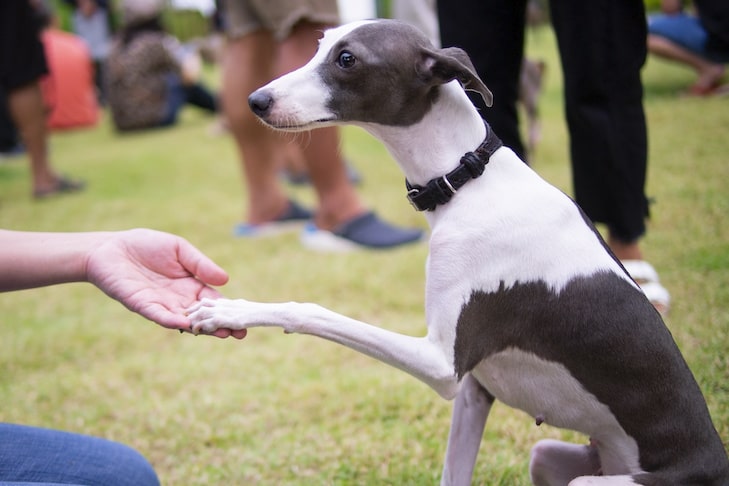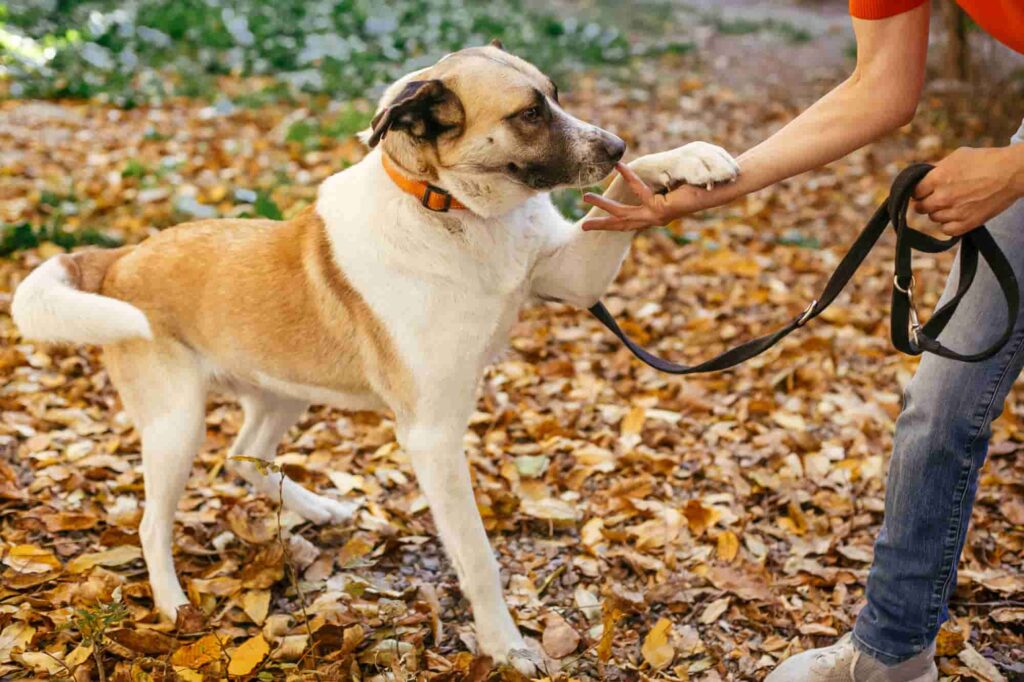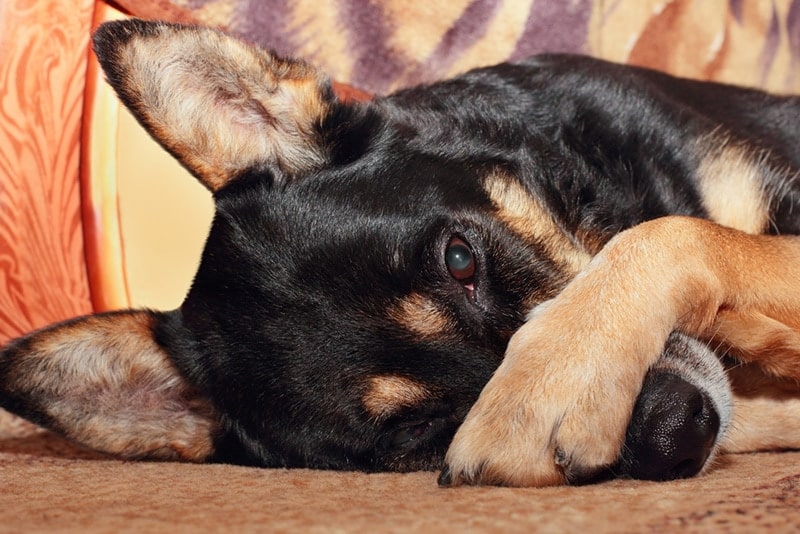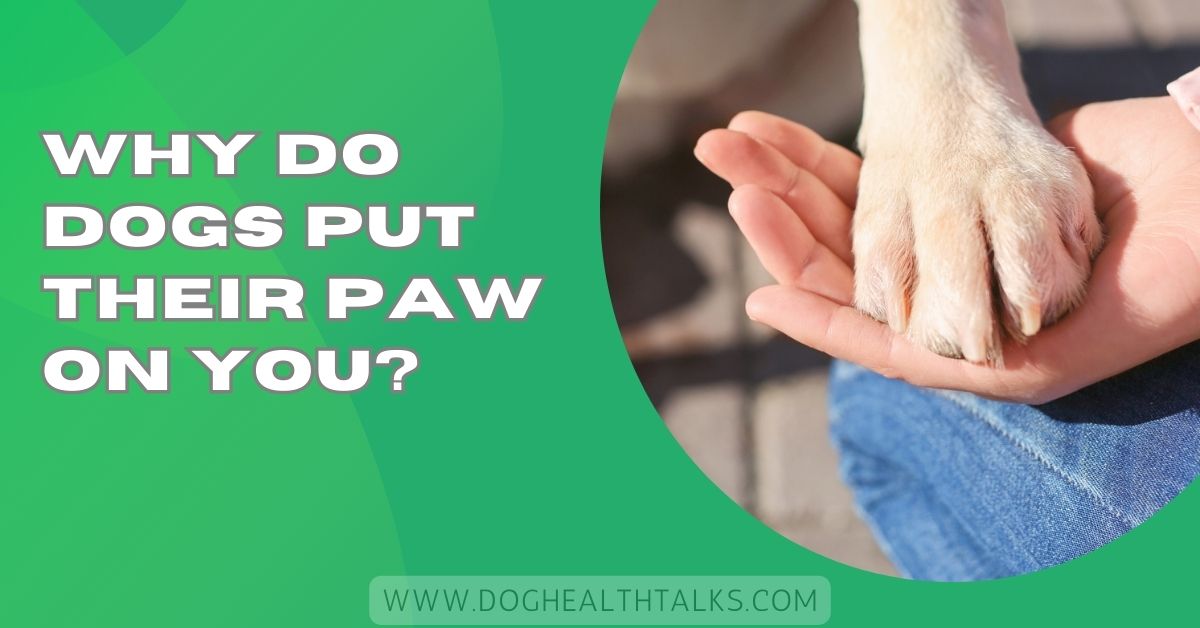Dogs have a special way of communicating that goes beyond barking or tail wagging. One of the most common gestures you might notice is your dog gently—or sometimes insistently—placing their paw on you.
Dogs put their paw on you as a sign of affection, trust, or closeness. They may want attention, comfort, or for you to continue interacting, showing their love and emotional connection naturally.
In this guide, we’ll explore the reasons behind this behavior and what it means for you.
Dogs rarely use words to communicate. Instead, their posture, tail position, ear movements, and facial expressions tell you how they feel. Pawing is an intentional action that can signify several things depending on the context.
For example, a dog that gently places its paw on your knee while making eye contact is often asking for attention or showing affection.
Observing the accompanying behaviors—like wagging tails, whining, or leaning—can help you interpret what your dog is trying to communicate.

One of the most common reasons dogs put their paw on you is to gain attention. Whether your dog wants to play, be petted, or interact, pawing is a polite way of saying, “Notice me!”
Puppies and young dogs, in particular, use this gesture to engage their owners, and older dogs may use it when they feel overlooked or bored.
Pawing is often a display of love. Similar to a human holding hands, your dog might place their paw on you as a sign of trust and emotional connection.
This behavior can be accompanied by soft eyes, gentle nudges, or resting their head against you, indicating that they feel safe and bonded.
Dogs are clever in communicating their needs. If your dog places a paw on you during mealtime or near a toy, they may be asking for a treat, food, or playtime.
Over time, dogs learn which gestures get them what they want, making pawing an effective communication tool.
Sometimes, pawing is a sign of unease. A dog experiencing anxiety may paw at you to seek comfort or reassurance.
Signs that pawing is stress-related include whining, pacing, trembling, or avoiding eye contact. Recognizing stress pawing allows you to calm your dog and address the underlying cause.
In some cases, pawing can reflect subtle social hierarchy behaviors. Dogs may use their paw to assert mild dominance, especially during play or interactions with other dogs.
While rare in affectionate interactions with humans, understanding this context helps prevent misinterpretation.
If a dog is suddenly pawing more than usual, it might indicate discomfort or pain. Issues such as an injured paw, itching, or a medical condition can prompt your dog to seek your attention.
If pawing is accompanied by limping, swelling, or unusual behavior, a veterinarian should evaluate your dog.

Different breeds may have varying tendencies when it comes to pawing. For instance, small breeds like Chihuahuas often paw for attention more frequently, whereas larger breeds like Labradors may paw more gently or less often.
Breed personality, energy levels, and training all influence how pawing is expressed. Understanding these nuances helps you interpret their behavior accurately.
| Breed | Typical Pawing Behavior | Reason |
| Labrador Retriever | Gentle, persistent pawing | Seeking attention or treats |
| Chihuahua | Frequent, sometimes urgent pawing | Anxiety or desire for affection |
| German Shepherd | Controlled, deliberate pawing | Showing interest or focus |
| Beagle | Excited, quick pawing | Curiosity or playful interaction |
Context is crucial when interpreting pawing. A paw on your lap while your dog wags its tail usually signals friendliness and affection.
On the other hand, a paw accompanied by a tense body posture or growling may indicate discomfort or mild aggression.
Observing overall body language—including ears, eyes, and tail position—can help you distinguish between playful, affectionate, and anxious pawing.
If your dog’s pawing is affectionate or attention-seeking, reinforce this behavior appropriately.
Responding with gentle petting or praise teaches them that pawing can be a positive form of communication. Timing is key; reward them immediately after the behavior to strengthen the connection.
When pawing becomes excessive or disruptive, consistent boundaries are essential. Teaching commands like “sit” or “stay” provides alternative behaviors.
Avoid punishment, as it may create fear or confusion. Instead, redirect your dog’s energy toward acceptable behaviors.
Dogs often paw out of boredom or curiosity. Engaging your dog with puzzle toys, fetch, or obedience games can reduce attention-seeking pawing. Mental stimulation not only improves behavior but also strengthens your bond with your pet.

Dogs often place their paw on your face to get attention or show affection. It’s a gentle way to connect, ask for petting, or signal love. Always respond calmly, keeping interactions safe and positive for both of you.
When a dog rests a paw on your arm, it’s usually seeking attention or comfort. It’s their way of asking for interaction or reassurance.
Respond gently to make them feel safe and understood without encouraging unwanted behavior.
If your dog paws you after you stop petting, it’s a clear signal that they want more attention. They may feel ignored and want reassurance. You can respond briefly, then redirect, teaching a balance between affection and boundaries.
Pawing can sometimes reflect subtle dominance, especially if paired with stiff posture or direct staring.
Most of the time, it’s playful or attention-seeking, so watch context carefully. Teaching commands like “sit” can help set safe, clear boundaries.
Dogs may offer a paw instinctively to communicate, get attention, or show affection. They don’t always need permission, but consistent training helps them learn when pawing is acceptable. Reward polite gestures to reinforce good behavior.
Placing a paw on you while sleeping is a comforting behavior. It shows trust, safety, and bonding.
Your dog feels secure and connected. Allowing this gentle contact can strengthen your emotional connection without causing stress.
A paw combined with licking usually signals love, reassurance, or attention-seeking. It’s their way of saying they care or want interaction.
Respond calmly and gently to strengthen trust and teach acceptable ways to ask for attention.
Pawing at your head is a bold, affectionate gesture. Dogs may be seeking attention, play, or expressing closeness. Make sure interactions stay safe and gentle. Encourage polite behavior by rewarding calm, controlled gestures.
When a dog rests a paw on you while lying down, it shows comfort, trust, and bonding. It’s a simple way to stay close and feel secure. Respond with gentle petting to reinforce a sense of safety and love.
Dogs paw at you to get attention, show affection, or communicate needs. Respond gently to keep interactions safe and positive.
Placing their paw or arm over you shows trust, bonding, or a desire for closeness. It’s their simple, affectionate gesture.
A paw on you can signal attention-seeking, love, or reassurance. Watch context and respond calmly to strengthen your bond.
Signs include seeking closeness, following you, pawing, and relaxed behavior around you, showing trust and emotional connection.
Dogs place their foot on you to communicate comfort, affection, or desire for attention. It’s a gentle, bonding behavior.
Pushing while sleeping shows trust and security. They feel safe resting near you and want gentle, comforting contact.
Dogs bond with the person providing care, attention, and consistent affection. Trust and positive interactions often decide their preference.
Yes, dogs recognize care and affection through touch, tone, and attention. Love is felt, even if they can’t verbalize it.
Pressing against you indicates comfort, safety, and trust. It’s their way to stay close and feel secure with you.
Dogs pick up emotional cues from your tone, posture, and behavior. They often respond with closeness, pawing, or gentle nudges.
Dogs put their paw on you for many reasons, from showing affection and trust to seeking attention or comfort. This simple gesture reflects their emotions, personality, and desire to connect with you. By observing their body language and understanding the context, you can respond appropriately, strengthen your bond, and create a safe, loving environment for your furry friend. Whether it’s playful pawing, gentle nudges, or comforting contact, recognizing what your dog is trying to communicate helps you meet their needs while teaching boundaries. Paying attention to these cues builds trust and deepens your relationship.
